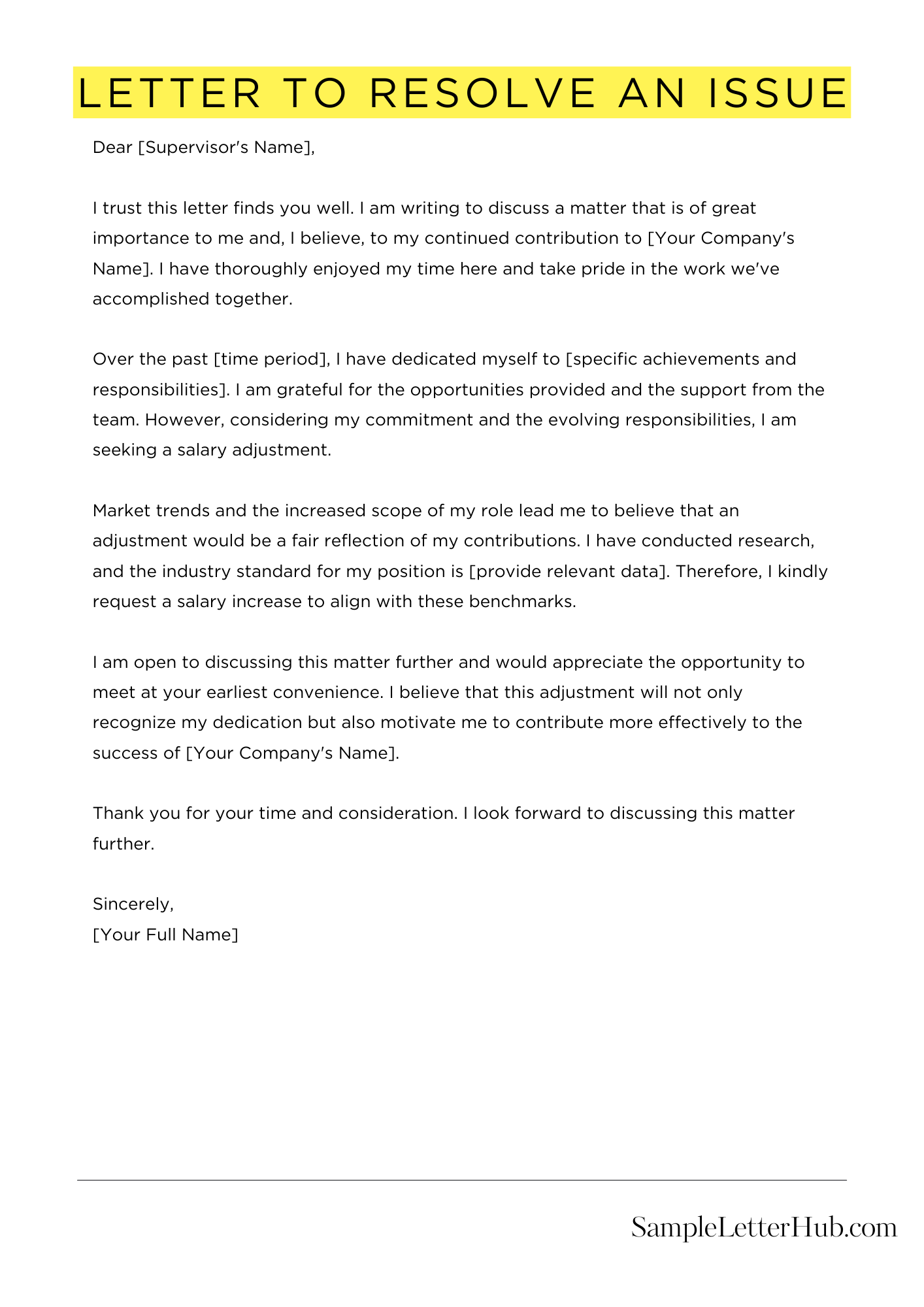To Resolve An issue is a simple and easy way to address a problem and find a solution. It is a step-by-step process that can be used to solve any type of problem, big or small.
In this blog post, we will share some samples of letters that you can use to help you to write a letter to Resolve An issue. These letters are written in a professional and courteous tone, and they will help you to get your point across in a clear and concise way.
Letter To Resolve An Issue
Dear [Recipient Name],
I am writing to express my concern regarding the recent issue I experienced with [product or service]. I purchased [product or service] on [date] and have been experiencing [issue].
I have tried troubleshooting the issue myself, but I have been unable to resolve it. I would appreciate it if you could investigate the matter and provide me with a solution.
I have attached a copy of my purchase receipt for your reference. I am available to provide any additional information that may be necessary.
Thank you for your time and attention to this matter. I look forward to hearing from you soon regarding a resolution.
Sincerely,
[Your Name]

How to Write a Letter to Resolve an Issue
1. Identify the Issue
The first step in writing a letter to resolve an issue is to identify the issue clearly. What is the problem? What are the specific details? Be as specific as possible so that the recipient can understand the issue and take appropriate action.
2. State Your Position
Once you have identified the issue, you need to state your position on the matter. What is your desired outcome? What are you asking the recipient to do? Be clear and concise in your request.
3. Provide Evidence
If possible, provide evidence to support your position. This could include documentation, data, or personal experiences. The more evidence you can provide, the more persuasive your letter will be.
4. Be Polite and Respectful
Even if you are frustrated or angry, it is important to be polite and respectful in your letter. Remember, the recipient is a person too. Be professional and avoid using inflammatory language.
5. Offer a Solution
If possible, offer a solution to the issue in your letter. This shows that you are willing to work with the recipient to find a resolution. Be creative and think outside the box.
6. Request a Response
At the end of your letter, request a response from the recipient. Let them know what you would like them to do and by when. Be specific and give them a deadline.
7. Proofread Your Letter
Before you send your letter, proofread it carefully for any errors. Make sure that your grammar and spelling are correct and that your letter is well-written. A well-written letter will make a good impression on the recipient and increase the chances of your request being granted.
FAQs about Letter To Resolve An Issue
What should be included in a letter to resolve an issue?
A letter to resolve an issue should include a clear statement of the issue, a description of the desired resolution, and any supporting documentation.
What is the best way to write a letter to resolve an issue?
The best way to write a letter to resolve an issue is to be clear, concise, and professional. Use polite language and avoid making accusations.
What should I do if I don’t get a response to my letter?
If you don’t get a response to your letter, you can try following up by phone or email. You can also try sending a certified letter, which will require the recipient to sign for it.
What are some tips for writing an effective letter to resolve an issue?
Some tips for writing an effective letter to resolve an issue include:
- State the issue clearly and concisely.
- Describe the desired resolution.
- Provide supporting documentation.
- Use polite language.
- Avoid making accusations.
- Follow up if you don’t get a response.
What should I do if the issue is not resolved after I send a letter?
If the issue is not resolved after you send a letter, you may need to take further action. This could include filing a complaint with a regulatory agency or taking legal action.
